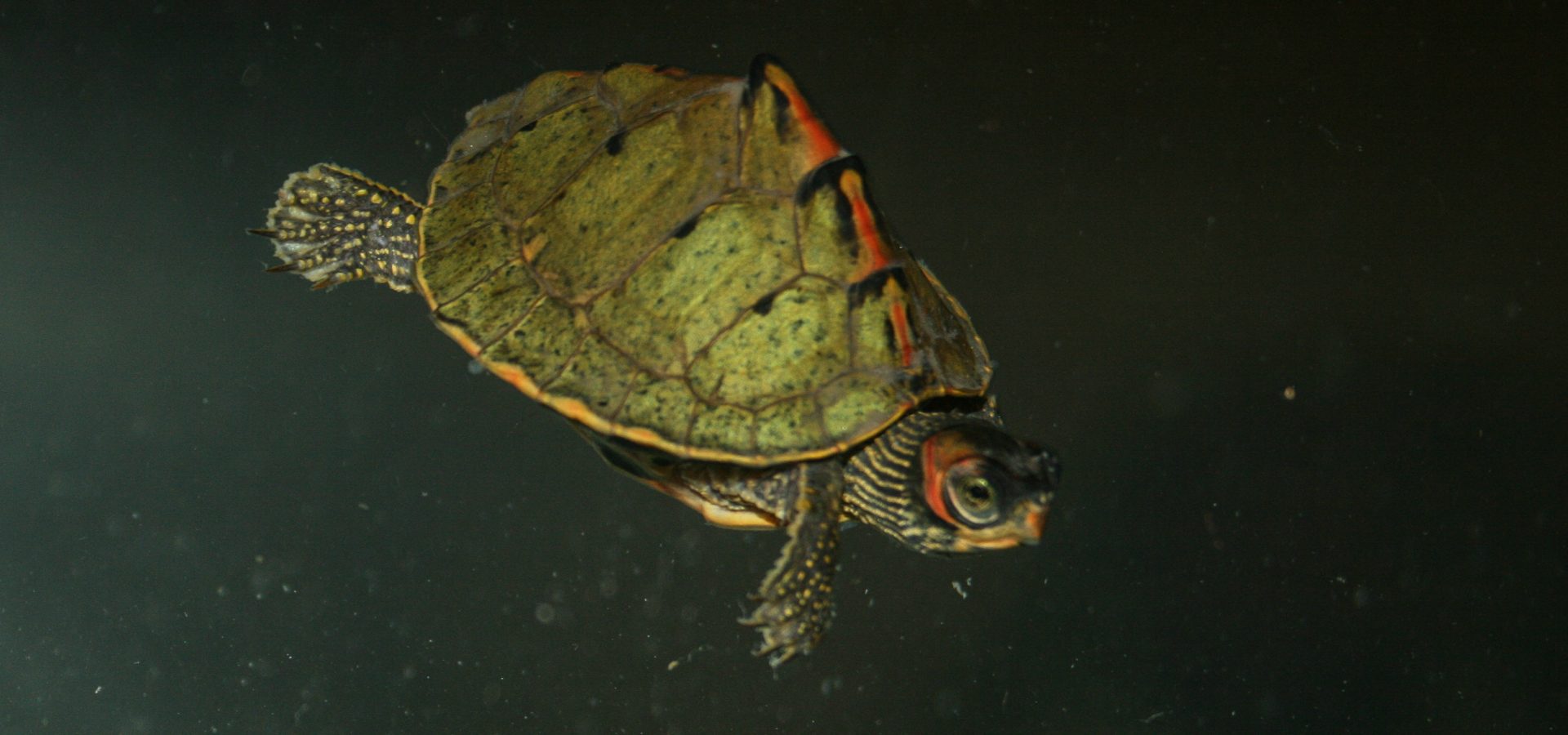Webbed limbs and super-tough shells – turtles sure are one of the most charismatic creatures on our planet. They can be found in a myriad of habitats ranging from deep seas to dense evergreen forests. An individual can grow up to six feet in length, and some can even swim over 37,000 kilometers!
Turtles belong to the group of reptiles, along with lizards and crocodiles, and are closely related to tortoises. They form an invaluable part of the natural world, both as predators and prey. They can be found in the sea (marine turtles), on land (terrestrial turtles), and around lakes, ponds, and streams (freshwater turtles). Freshwater testudines feed on algal bloom and some even on dead matter, keeping our water sources clean. These animals are also known to contribute to seed dispersal and germination.
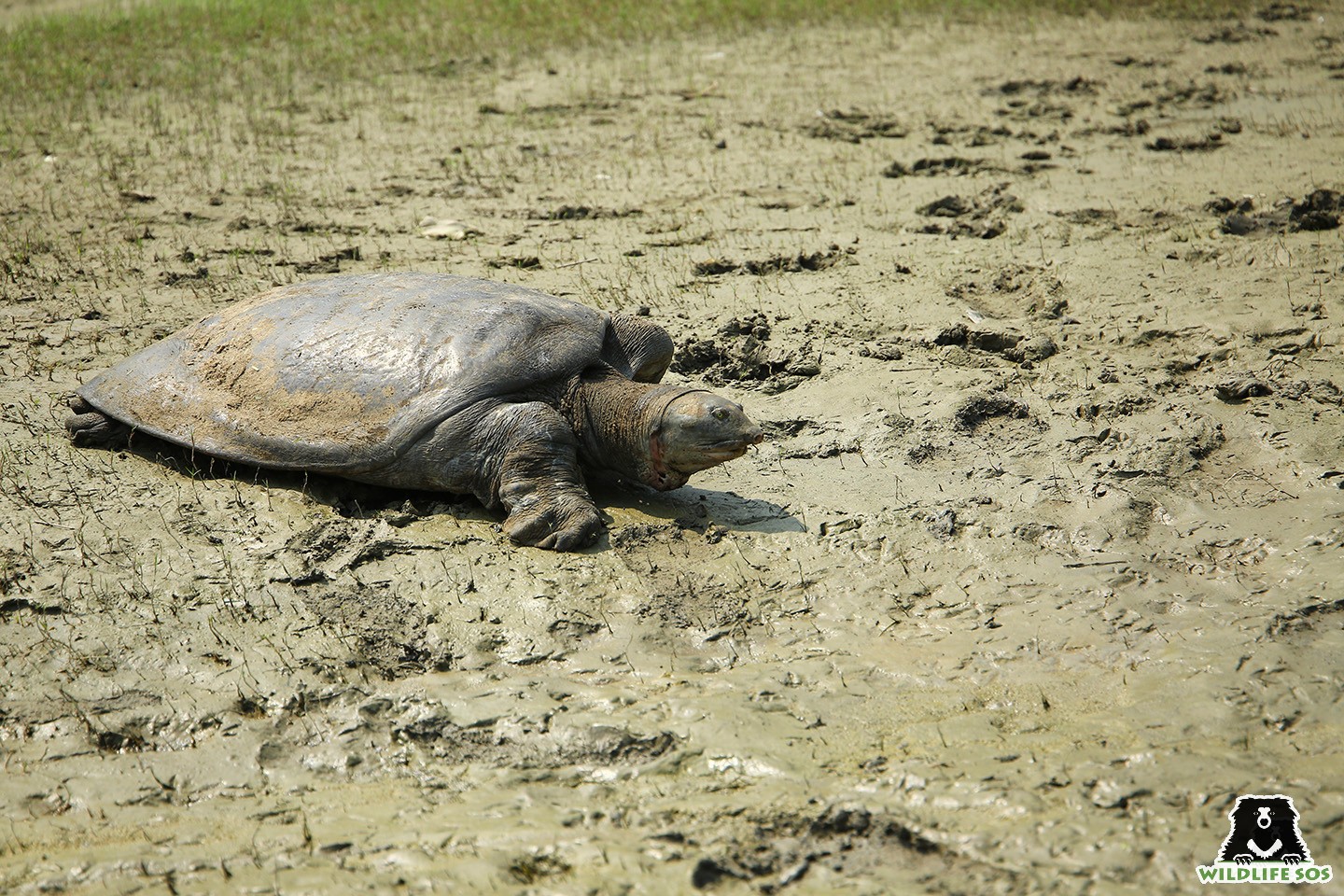
With the earliest fossils dating back to 220 million years ago, turtles and tortoises are among the oldest groups of animals on Earth. After having survived several millennia, more than half of the world’s existing turtle and tortoise species today are threatened with extinction.
Turtles In Trouble
According to the report by TRAFFIC in 2019, India is home to five marine turtles and 24 species of tortoises and freshwater turtles. Of these, 23 species inhabit the northeastern region. A report compiled by the Turtle Conservation Coalition in 2011 cites that nearly 7.4% of the world’s 25 most threatened turtles are found in India: Northern River Terrapin and Red-crowned Roof Turtle are two species that are included in the list.
The report published by the International Union for Conservation of Nature (IUCN) states: “Of the 360 currently recognized species in 14 families, 187 (51.9%) are considered Threatened by IUCN Red List criteria. Of these, 127 species of the total 360 (35.3%) are Endangered or Critically Endangered. Seven species and ten taxa of chelonians have gone extinct in the past 280 years (…)”
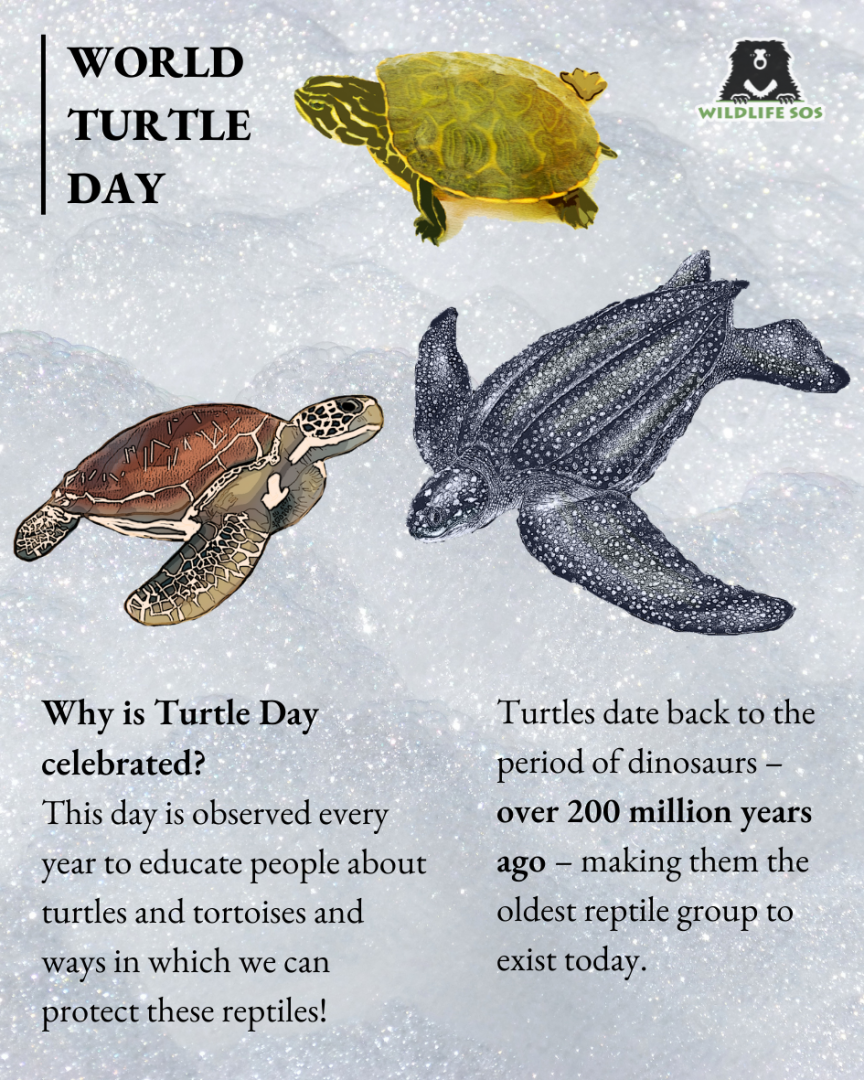
Both natural, as well as anthropogenic threats, put turtles and their close relatives, tortoises, at risk of extinction. We list some of the causes and effects of these threats.
Pet Trade
Every other day, we come across news highlighting the mass trafficking of wild animals. International trade in reptiles is most common in countries of Southeast Asia. Extracted from the wild, these turtles cater to a massive demand market. In certain cultures, turtles are viewed as a status symbol and therefore sold at high prices.
Despite being protected by CITES, several turtle species are being traded to be kept as pets. Spotted Pond Turtles and Indian Star Tortoises from the Indian subcontinent are kept as house pets. The popular red-eared slider is a non-native species to India, but is brought over from the United States and is extensively bred here. However, this is an invasive species and poses a threat to India’s native species.
Commercial Consumption
We often associate farming with plant species, but believe it or not, turtle farms form an enormous industry! Millions of turtles and tortoises are relentlessly poached from their natural habitats and sold to meet food and medicinal needs. Asian box turtles, for instance, are caught from the wild and even bred in captivity to be sold for medicinal purposes.
In TRAFFIC’s 2019 research report, it is stated that a whopping 1,11,312 Indian tortoises and freshwater turtles were victims of illegal trading. Public transport systems such as buses, railways, ships, and airlines are means of moving these reptiles illegally. The report also states that over 60% of turtles and tortoises were confiscated from Uttar Pradesh and West Bengal. Indian Star Tortoise, Indian Softshell Turtle, Indian Flapshell Turtle, and Spotted Pond Turtle are the most commonly traded testudines.
Four species of softshell turtles are traded for food. In the states of Bihar, West Bengal, Chhattisgarh, and Uttar Pradesh, turtle meat is widely sold in local markets. From the Gujarat and Lakshadweep coastline, eggs of turtle species are extracted to procure oil for cosmetic products. With the booming trade of eggs and turtle meat as delicacies, colourful shells for ornaments and animal extracts to cure diseases, the testudine species are facing a grave threat of overconsumption.
Habitat Loss
Massive forest lands are being used for agriculture and urban development projects. Roads and railways are being expanded for convenient accessibility. While benefiting humans, this is eliminating habitats for wild animals. Sadly, only 1 in 1000 sea turtle hatchlings is likely to survive to adulthood.
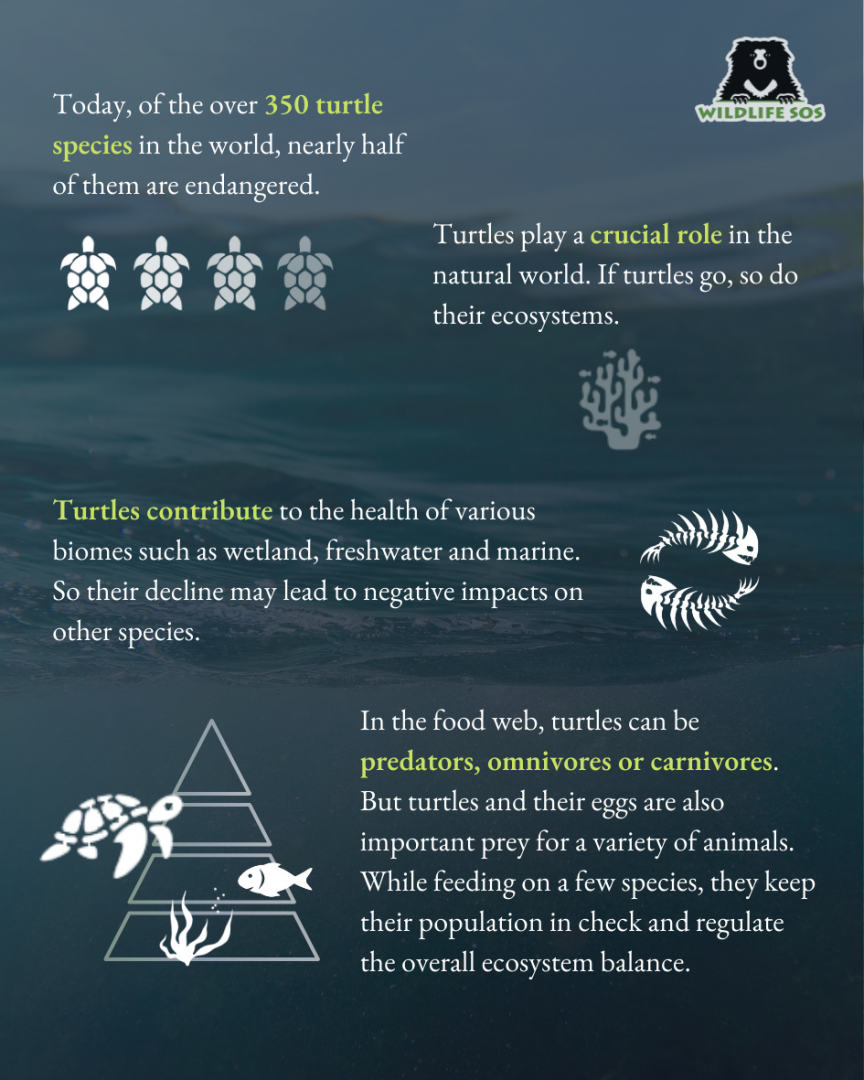
Sea turtles are largely impacted by construction and mining activities happening along the coasts. The olive ridley migration along the Odisha coast is an example of how lights along the coastline waver the path of hatchlings who are innately aware that moonlight leads them to the ocean.
Pollution
Seas, lakes, rivers, and wetlands are home to a wide variety of testudines. These water bodies are now exposed to pollution. Factory and urban waste, dam construction, and mining lead to the depletion of water quality. Studies have reported that contaminants like heavy metals and toxins that accumulate in freshwater bodies affect the survival and growth of young turtles. We are surrounded by plastic, the smallest and the largest of which is conveniently dumped into the ocean.
In 2019, the Central Pollution Control Board reported that in India, 3.3 million metric tonnes of plastic waste is generated annually. The fashion and clothing industry is responsible for 35 percent of microplastics in the ocean. Marine animals like turtles ingest these tiny fibers. Sea testudines that primarily feed on jellyfish rely upon their vision to seek prey. They often get confused and end up feeding on plastic bags and balloons instead. Plastic may also be consumed by smaller animals that turtles feed on.
Tendency to Invade
Red-eared sliders, as we mentioned earlier, are now residing in the freshwater bodies of India and are known to spread Salmonella and Shigella bacterial infections. Due to their small size and attractive colouration, they are a popular pet species. However, as it grows into an adult, the slider is released into a nearby water body from the household aquarium. Lacking any natural predator, the animal continues to multiply and thrive in numbers, thereby invading resources consumed by the native wildlife.
Climate Change
Ever-rising sea temperatures are taking a toll on marine populations around the globe. Whether the eggs of sea turtles hatch as male or female offspring is determined by the temperature of incubation within the nest. As the sea level rises, it continues to disrupt their potential nesting habitats on coasts. Warmer oceans are changing water currents, thereby impacting the movement of turtles. Coral reefs are an important source of food for numerous turtle species but are suffering from the “bleaching” phenomenon.
Steady Protection Of Turtles
Turtles can have a lifespan lasting even up to 50 years! They reach adulthood after several decades, and females are known to give birth to their young ones in their final years. Each mother can lay over 200 eggs in a clutch. With each female poached from the wild, her species is under threat. Even with external breeding efforts, the species may take decades to recover owing to their reproductive pattern.
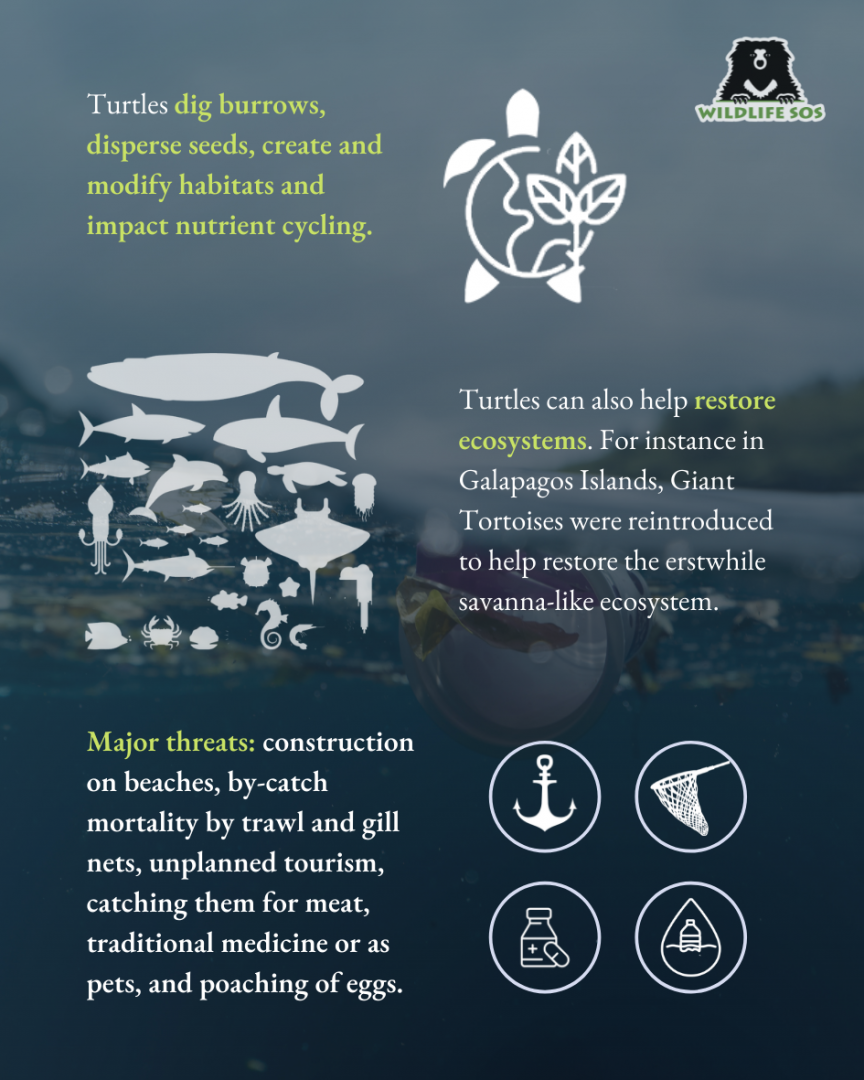
Most of these species receive protection under the Wildlife (Protection) Act, 1972. Seventeen of all extant species are listed under Schedule I, receiving the same level of protection as the tiger and elephant. While one species is listed under Schedule II and five under Schedule IV, they are all prohibited from illegal hunting and poaching. Moreover, all Indian testudines are also protected from international trade by CITES. Sea testudines of India are internationally protected under the Convention on Migratory Species.
Now you know that it is illegal to keep these animals as pets. So if you come across one, contact your local forest department, or Wildlife SOS if you’re in the following cities:
Delhi NCR – +91-9871963535
Agra & Mathura in Uttar Pradesh – +91-9917109666
Vadodara, Gujarat – +91-9825011117
Jammu & Kashmir – +91-7006692300, +91-9419778280

